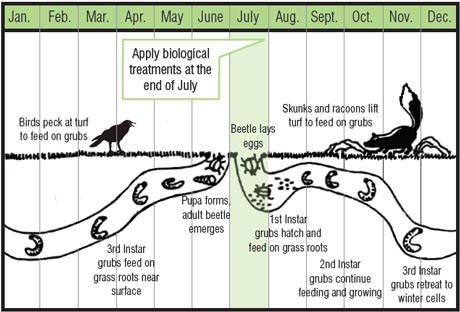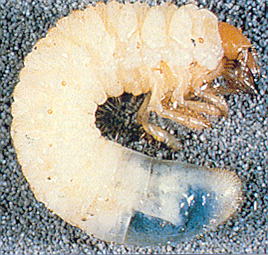
In an average landscape, hundreds, even thousands of insects make their home across parts of the lawn, in flower beds, in plant materials, in trees and shrubs, and many other environments they see fit. The good news is, the majority of these insects are considered beneficial and non-harmful or destructive to the landscape. Only a small group of insects are classified as destructive turfgrass insects, and if left untreated they can cause major damage and devastate turfgrass in a lawn.
The White Grubs, commonly known as the “European Chafer”, “May/June Beetle”, and “Japanese Beetle” are very common in home lawns across many regions of the United States and Canada. White Grubs are very destructive and can devastate and damage a lawn in short time if left untreated. Extensive damage to the lawn is also commonly created by animals digging in the lawn searching and feeding on the white grub larvae such as racoons, skunks and birds. In many cases this damage can be far more severe than just areas of dead grass. Often sections of the lawn are ripped up, overturned and torn away as the animals dig through the soil in search of the white grub larvae to feed on. Evidence of animals digging is usually a very good indication that white grub larvae could be present or some other type of damaging insect is active.
One of the most important aspects of insect management is making sure the insect causing the damage is properly identified what life cycle the insect is in, what the infestation threshold limits are, and the location in the lawn where the insect is. These pieces of information will all help determine what control options are available and what the best course of action is required.






